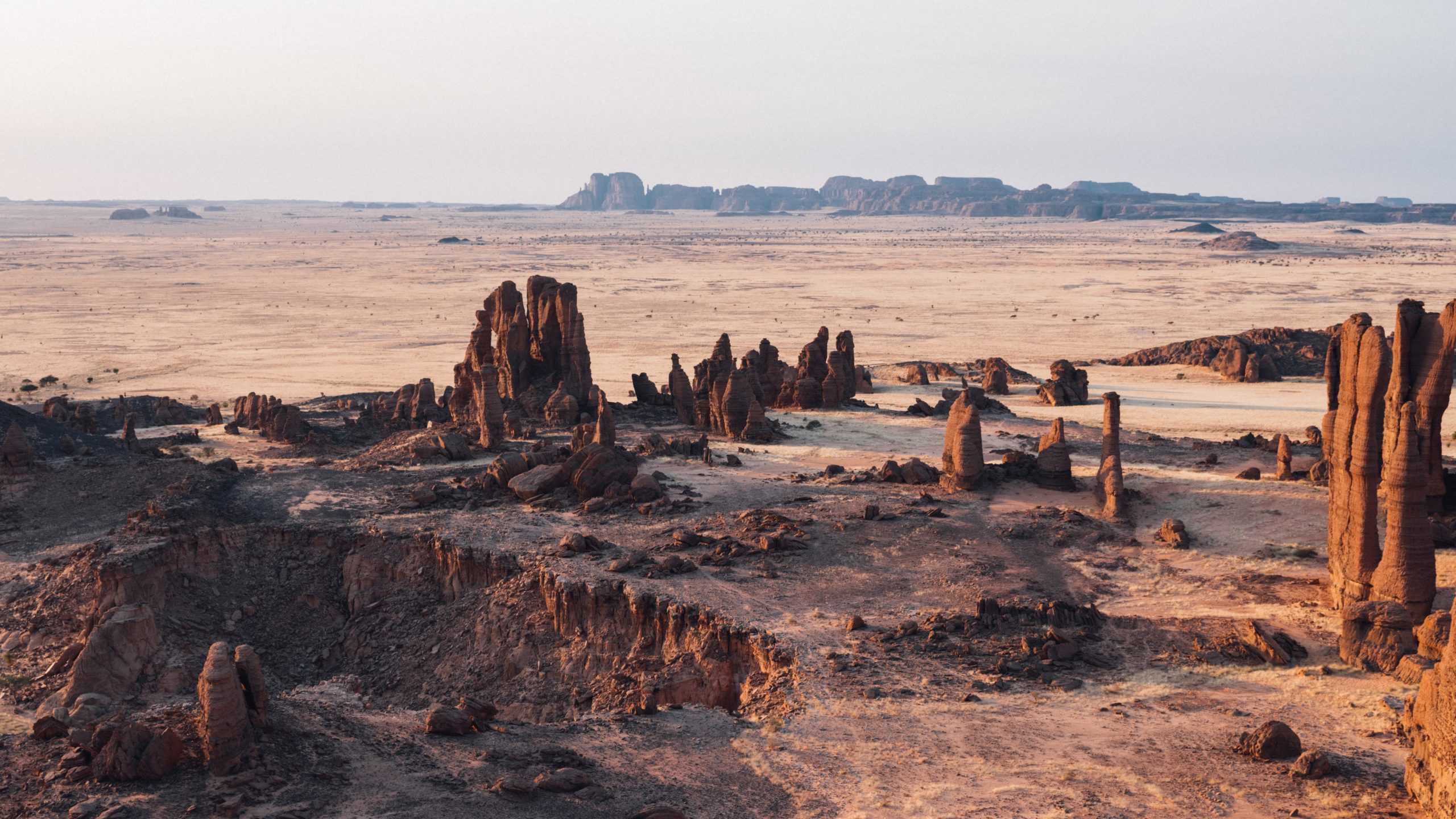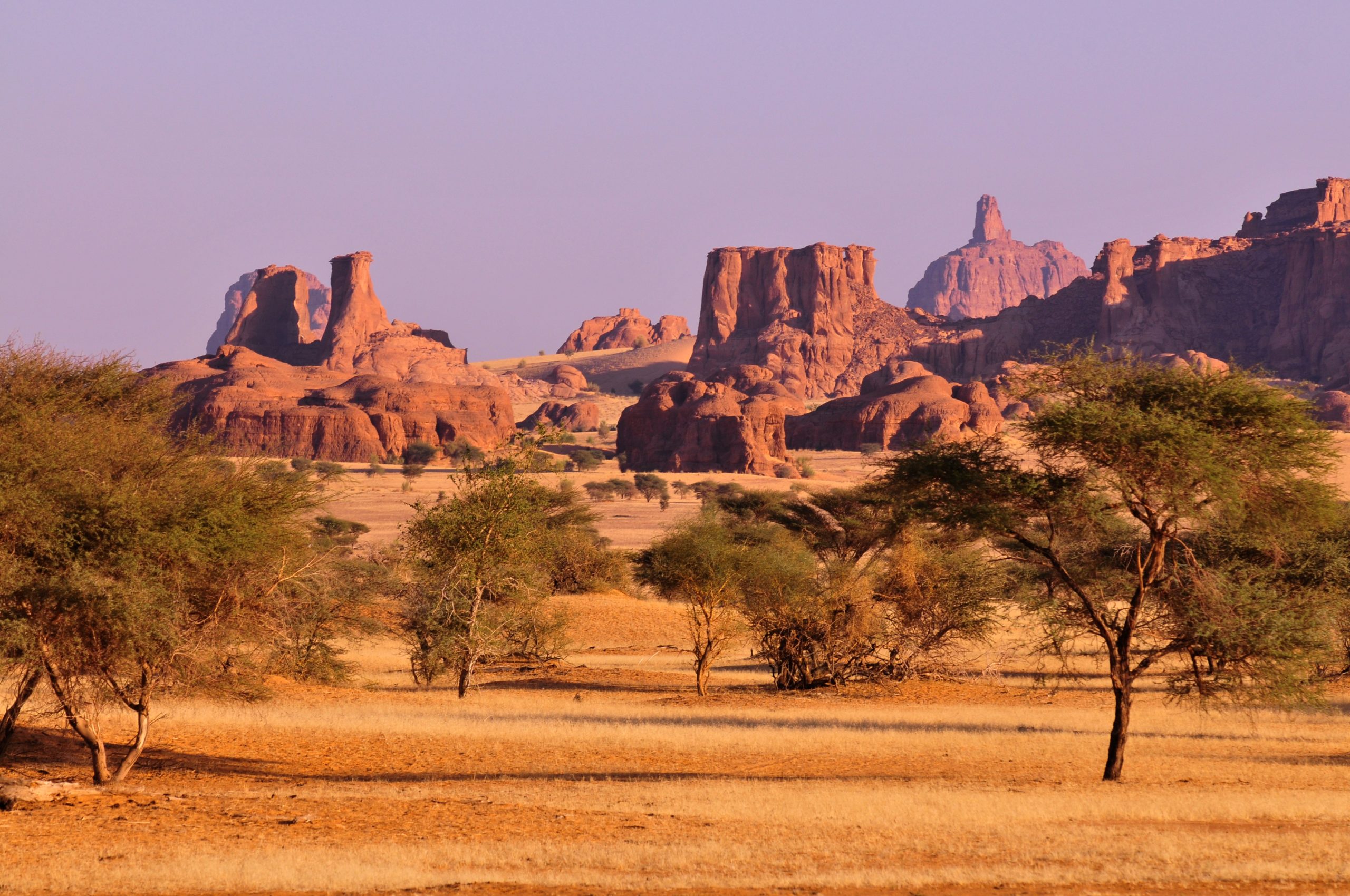Chad: A Journey Through History, Culture, and Challenges
 Nestled in the heart of Africa, Chad is a land of contrasts, where ancient traditions meet modern challenges, and diverse cultures converge amidst breathtaking landscapes. From the shores of Lake Chad to the sands of the Sahara Desert, this vast and enigmatic country has played a pivotal role in shaping the region's history and identity. In this exploration, we embark on a journey through the rich tapestry of Chad's past, present, and future, uncovering its storied heritage, cultural treasures, and the complex challenges it faces in the 21st century.
Nestled in the heart of Africa, Chad is a land of contrasts, where ancient traditions meet modern challenges, and diverse cultures converge amidst breathtaking landscapes. From the shores of Lake Chad to the sands of the Sahara Desert, this vast and enigmatic country has played a pivotal role in shaping the region's history and identity. In this exploration, we embark on a journey through the rich tapestry of Chad's past, present, and future, uncovering its storied heritage, cultural treasures, and the complex challenges it faces in the 21st century.
A Land of Diversity: Geography and Environment
Chad, officially known as the Republic of Chad, is a landlocked country in Central Africa, bordered by Libya to the north, Sudan to the east, the Central African Republic to the south, Cameroon and Nigeria to the southwest, and Niger to the west. Covering an area of approximately 1.3 million square kilometers (500,000 square miles), Chad is the fifth-largest country in Africa, encompassing a diverse range of ecosystems and landscapes.
The geography of Chad is characterized by its remarkable diversity, from the verdant oases of the Sahelian belt in the south to the arid expanses of the Sahara Desert in the north. The Chadian Basin, which includes the vast Lake Chad—the largest wetland in the Sahel region—serves as the country's geographical centerpiece and a vital source of water, food, and livelihoods for millions of people.
However, Chad's environment is under increasing pressure from climate change, desertification, and environmental degradation. Erratic rainfall patterns, rising temperatures, and unsustainable land use practices have led to shrinking water sources, dwindling agricultural productivity, and heightened vulnerability to natural disasters. Addressing these environmental challenges is crucial for Chad's long-term sustainability and resilience.
Echoes of the Past: History and Heritage Chad's history is as diverse and complex as its geography, shaped by millennia of human migration, cultural exchange, and political upheaval. The region that is now Chad has been inhabited by various indigenous peoples for thousands of years, including the Kanembu, Tubu, Sara, and Arab-Berber groups, each with their own distinct languages, traditions, and customs.
Chad's history is as diverse and complex as its geography, shaped by millennia of human migration, cultural exchange, and political upheaval. The region that is now Chad has been inhabited by various indigenous peoples for thousands of years, including the Kanembu, Tubu, Sara, and Arab-Berber groups, each with their own distinct languages, traditions, and customs.
One of the earliest known civilizations in Chad was the Kanem-Bornu Empire, which emerged in the 9th century AD and flourished as a center of trade, scholarship, and Islamic culture in the Sahel region. The empire's strategic location along trans-Saharan trade routes brought wealth and influence to the region, fostering a rich exchange of ideas, goods, and people.
Subsequent centuries saw the rise and fall of various kingdoms and empires in Chad, including the Ouaddai Empire, the Bagirmi Kingdom, and the Sultanate of Darfur. These polities vied for control over lucrative trade routes, natural resources, and agricultural lands, leaving behind a legacy of cultural diversity and historical significance that continues to shape Chad's identity to this day.
The colonial era brought profound changes to Chad, as the territory fell under the control of European powers seeking to exploit its resources and strategic importance. Chad was colonized by France in the late 19th century as part of French Equatorial Africa, a vast colonial territory encompassing much of Central Africa. French colonial rule brought significant social, economic, and political transformations to Chad, including the introduction of cash crops, modern infrastructure, and administrative systems. Chad gained independence from France in 1960, ushering in a new era of self-determination and nation-building. However, the post-independence period was marked by political instability, ethnic tensions, and armed conflict, as various factions vied for power and influence in the newly formed republic. The legacy of colonialism, coupled with internal divisions and external pressures, contributed to decades of turmoil and strife in Chad's quest for stability and development.
Chad gained independence from France in 1960, ushering in a new era of self-determination and nation-building. However, the post-independence period was marked by political instability, ethnic tensions, and armed conflict, as various factions vied for power and influence in the newly formed republic. The legacy of colonialism, coupled with internal divisions and external pressures, contributed to decades of turmoil and strife in Chad's quest for stability and development.
Cultural Kaleidoscope: Diversity and Traditions
Chad is home to a rich tapestry of cultures, languages, and traditions, reflecting its diverse ethnic composition and historical legacy. The country is inhabited by more than 200 distinct ethnic groups, each with its own unique customs, languages, and social structures. Among the largest ethnic groups in Chad are the Sara, Arab, Kanembu, and Tubu peoples, who inhabit different regions of the country and maintain distinct cultural identities.
Despite this diversity, there are common threads that unite Chadians across ethnic and regional lines. Islam and Christianity are the two dominant religions in Chad, coexisting alongside indigenous belief systems and animist traditions. Religious practices often intersect with cultural rituals and ceremonies, shaping social norms, family life, and community cohesion.
Traditional music and dance play a central role in Chadian culture, serving as expressions of identity, storytelling, and collective celebration. The rhythms of drums, flutes, and stringed instruments resonate throughout the country, accompanied by vibrant costumes, intricate choreography, and spirited performances. Music festivals and cultural events provide opportunities for people to come together, share their talents, and celebrate their shared heritage.
Cuisine in Chad is a reflection of its diverse cultural influences and geographical diversity. Staple foods include millet, sorghum, rice, and maize, which are often served alongside a variety of meats, vegetables, and sauces. Dishes such as millet porridge, grilled meat skewers, and peanut-based stews are popular across the country, offering a taste of Chadian hospitality and culinary traditions.
Challenges and Opportunities: Navigating the Future Despite its rich cultural heritage and natural resources, Chad faces a range of complex challenges that threaten its stability, development, and prosperity. Political instability, corruption, and weak governance have hindered progress and contributed to persistent poverty, inequality, and social unrest. Moreover, Chad's reliance on oil revenues has made its economy vulnerable to fluctuations in global oil prices, exacerbating economic volatility and fiscal pressures.
Despite its rich cultural heritage and natural resources, Chad faces a range of complex challenges that threaten its stability, development, and prosperity. Political instability, corruption, and weak governance have hindered progress and contributed to persistent poverty, inequality, and social unrest. Moreover, Chad's reliance on oil revenues has made its economy vulnerable to fluctuations in global oil prices, exacerbating economic volatility and fiscal pressures.
Humanitarian crises, including armed conflict, displacement, and food insecurity, pose significant challenges to Chad's development and well-being. The ongoing conflict in neighboring countries, such as Libya, Sudan, and the Central African Republic, has spilled over into Chad, displacing thousands of people and straining already limited resources. Moreover, recurrent droughts, floods, and locust invasions have exacerbated food insecurity and malnutrition, particularly in rural areas. Addressing these challenges requires concerted efforts from both the Chadian government and the international community to promote peace, stability, and sustainable development. Strengthening governance institutions, promoting transparency and accountability, and investing in education, healthcare, and infrastructure are essential for building resilience and fostering inclusive growth.
Addressing these challenges requires concerted efforts from both the Chadian government and the international community to promote peace, stability, and sustainable development. Strengthening governance institutions, promoting transparency and accountability, and investing in education, healthcare, and infrastructure are essential for building resilience and fostering inclusive growth.
Furthermore, Chad's rich cultural heritage and natural beauty offer opportunities for tourism development and economic diversification. The country's diverse landscapes, including national parks, wildlife reserves, and cultural sites, have the potential to attract visitors from around the world, generating revenue, creating jobs, and promoting cross-cultural exchange. However, sustainable tourism practices, community engagement, and conservation efforts are necessary to ensure that tourism benefits local communities and preserves Chad's natural and cultural heritage for future generations.
In conclusion, Chad is a country of extraordinary beauty, diversity, and resilience, shaped by centuries of history, culture, and tradition. From its breathtaking landscapes and vibrant cultural tapestry to its complex challenges and opportunities, Chad embodies the complexities of the African continent and the human experience. As Chad navigates the path towards a brighter future, it is essential to draw upon its rich heritage, harness its collective strengths, and embrace the spirit of unity, innovation, and collaboration to build a better tomorrow for all Chadians.






























